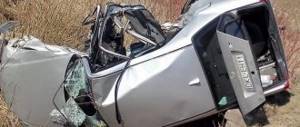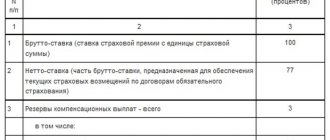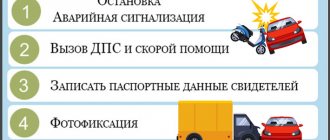What does direct compensation for losses under OSAGO mean?
Direct compensation for losses means that the driver does not have to contact the company where the person at fault received insurance. With this approach, the victim has the right to request payments by contacting the company where he executed his MTPL agreement.
What is an alternative PPV under compulsory motor liability insurance?
Showing concern for car owners who suffered losses from a collision, the authorities passed a law giving the applicant the opportunity to independently choose an insurance company to receive compensation. Thus, the victim could use both the classic option of receiving payments from the company that insured the culprit, and the alternative option of contacting his own company.
However, the adopted law did not bring the desired results. Not very conscientious insurers used it as a loophole to “football” clients. Having presented a lot of arguments, the truth of which is difficult for an inexperienced client to verify, he was redirected to another insurance company. The process could be repeated there too. Instead of the expected simplification, the situation took a completely opposite direction.
There were also cases in which the victim submitted applications to both insurance companies at once in the hope of double payments.
The right of the victim to independently choose a company to receive compensation for the restoration of a damaged car is called an alternative PPV under compulsory motor liability insurance.
What is a non-alternative PPV in compulsory motor liability insurance?
In 2014, the law on payments underwent global changes. To resolve the situation, the authorities determined the only possible way to receive payments from the insurance company after the accident.
After innovations, you should apply for compensation only to the company with which the contract was concluded. The ambiguity in the relationship between the victim and the insurer was eliminated, along with the possibility of choice.
The payment method, when an application for compensation is submitted to the office of the company with which the contract was concluded, is called the non-alternative PPV OSAGO.
What else to read:
- My car was scratched in the yard, what should I do?
- Europrotocol 2021
- How to get money instead of repairs under compulsory motor liability insurance: a detailed review
Arbitrage practice
So, if a number of conditions are met, a victim of an accident can contact his insurance company to receive direct compensation for losses under compulsory motor liability insurance. The greatest amount of controversy is caused by the condition that PES are subject only to accidents in which there was an interaction between two vehicles.
The essence of the problem lies in the fact that the concept of “vehicle interaction” is not disclosed at the legislative level. In this regard, judicial practice shows that courts make different decisions on disputes about certain road accidents. Usually the question is posed as follows: is it necessary to confirm the presence of direct contact between vehicles in order to prove the fact of a collision (or interaction) of vehicles and obtain a basis for a PWU? For example, a dispute may arise over whether an attempt to escape from a possible collision, as a result of which the driver crashed into a pole, is considered an interaction.
Judicial practice in regional courts shows that most often they make the following decision - interaction can be understood not only as a direct collision, but also as damage caused by a possible danger (the cars themselves). This allows us to conclude that direct contact is not at all necessary.
The Supreme Court of the Russian Federation thinks completely differently. He says that an insured event in which damage was caused without direct contact between vehicles is not the basis for an application for direct compensation for losses under compulsory motor liability insurance. This conclusion was made on the basis of the determination of the Judicial Collegium for Civil Cases of the Armed Forces of the Russian Federation No. 25-KG17-1.
It turns out that practice in such cases says the following: direct contact between two vehicles is a prerequisite for obtaining a PPV under compulsory motor liability insurance. In any other situation, you must contact the insurance company of the person responsible for the accident for payment.
Another frequent dispute is the refusal of a PWU under compulsory motor liability insurance due to the fact that the guilt of a particular participant has not been established, although in fact the guilt has been determined (even if it is mutual). The law on compulsory motor liability insurance states that in case of mutual fault, the insurer is obliged to pay damages taking into account the degree of fault of the participants in the accident. If this is not established, then compensation is made in equal shares.
Judicial practice confirms the above. For example, the Supreme Court indicates that the insurance company is obliged to compensate for damage, taking into account the degree of guilt that the court has established.
What does the law say about PPV under compulsory motor liability insurance?
Dear readers!
Our articles talk about typical ways to resolve legal issues, but each case is unique. If you want to find out how to solve your particular problem, please contact the online consultant form
It's fast and free!
Or call us by phone (24/7):
If you want to find out how to solve your particular problem, call us by phone. It's fast and free!
+7 (495) 980-97-90(ext.589) Moscow,
Moscow region
+8 (812) 449-45-96(ext.928) St. Petersburg,
Leningrad region
+8 (800) 700-99-56 (ext. 590) Regions
(free call for all regions of Russia)
The updated Federal Law on Compulsory Motor Liability Insurance, for which direct compensation for losses is assigned to the company of the victim's insurer, is the main act regulating insurance payments. Law No. 40 “On Compulsory Insurance” strictly defines the order of relationships:
- for insurance companies - in what situation, which company bears the costs;
- for the client - the conditions for contacting a particular company.
Also, direct compensation for damages from compulsory motor liability insurance is indirectly influenced by:
- Articles 186, 366, 325 of the Civil Code of the Russian Federation - on issues of financial relations;
- Chapter 55 of the Civil Code of the Russian Federation - annex to the Agreement for members of the Union of Insurers;
- Order of the Ministry of Finance of 2009 is the basis for the development of general norms of Federal Law No. 40.
The introduction of updates allowed:
- stop fraudulent machinations of insurers and unscrupulous clients;
- eliminate the ambiguity of existing legislation;
- make the payment procedure easier;
- exclude unjustified refusals by the insurance company to pay the client;
- reduce the period for receiving compensation.
Conditions for non-alternative direct compensation under MTPL
The new legislation allows the victim to undergo a simplified procedure for compensation for damage by contacting the insurance office where he executed the contract. This opportunity is provided if the approved conditions of the compulsory motor insurance policy are met:
- no more than two cars were damaged, one of which belonged to the victim, and the second belonged to the initiator of the incident;
- the participants in the accident have no injuries requiring medical intervention;
- Both drivers have MTPL policies;
- The traffic police report clearly indicates the culprit of the accident.
Once you make sure that the necessary requirements are met, you can receive direct compensation under OSAGO.
Nuances
We invite you to familiarize yourself with the key nuances of the procedure for obtaining direct compensation for losses under compulsory motor liability insurance in 2021:
- Direct compensation for losses under compulsory motor liability insurance is the payment of insurance compensation to the injured person from the insurance company in which he is insured.
- The difference between a PPV and a standard insurance payment is that in the classic version, the victim turns to the culprit’s insurer, and in the case of direct compensation, he turns to his company.
- To obtain a PES, a number of conditions must be met.
- The instructions for obtaining a PPV are simple: prepare documentation at the accident site, submit it with an application to the insurer, assess the papers and the extent of damage, and receive payment.
- You can complete an application for reimbursement yourself, but it is still recommended to use the current standard forms.
- If necessary, the interests of the victim may be represented before the insurer by a lawyer who has the appropriate power of attorney.
In 2021, any victim, if a number of conditions are met, can receive a payment from the company in which he entered into an MTPL agreement. This was introduced in order to significantly simplify the process of receiving compensation.
In what cases can payment be refused?
Refusal to pay and direct reimbursement are completely different concepts. A company has the right to send a notice of refusal to pay if there were gross violations when submitting documents or attempts to imitate an accident. The most common legitimate reasons for denial of payments include:
- incomplete package of documents;
- lack of a valid policy;
- attempting to obtain compensation for damaged art objects;
- violation of application deadlines;
- details for crediting funds are not specified;
- False information about the situation was provided.
Justified refusal in PES
Denial of direct compensation implies that the victim will still receive insurance payments, but a simplified method is not available to him. Reasons for refusal confirmed by law include:
- the insurance company of the accident initiator has gone bankrupt or lost its license;
- the company that insured the culprit did not take part in signing the agreement on simplified payments;
- contacting a company representative office instead of the main office;
- the victim filed a claim for payments to both companies at once;
- errors were made when applying for the policy;
- the protocol does not indicate a specific culprit of the accident or several are indicated;
- the European protocol is filled with gross violations;
- the vehicle was repaired before an expert assessment of the damage was carried out;
- there are casualties in the collision;
- more than two cars were damaged;
- The insurance specialists were not able to inspect the car within the established time frame.
Reference! Direct compensation for losses under compulsory motor liability insurance is impossible if any of the established reasons occur.
Unreasonable refusal
When an insurance claim is received that involves a large amount of payments, the company does its best to get rid of the client. Commonly used reasons for unlawful refusal include:
- this law does not apply in our organization;
- We have too many applicants, contact the initiator’s company;
- Now there are temporary financial difficulties, bring your application later.
None of these reasons is a legal basis for refusal. An insurance company that uses such methods is flagrantly violating the law.
In this case, the victim must request a written refusal indicating the reason. Based on the issued document, you should contact the RAS and, possibly, the court.
When you don’t have to rely on PVU
Insurance companies may refuse compensation for many reasons. Sometimes these reasons are completely legitimate, but sometimes it’s the other way around. In such situations, the policyholder must go to court by providing a certificate of refusal to compensate for the damage.
A refusal to apply for a PPV for car insurance does not mean that the victim will not receive anything. Having received a negative decision on payment, the policyholder needs to send the same documents to the organization protecting the culprit of the incident.
If a driver receives a PPV refusal from his insurance company, it means:
- It is impossible to determine the culprit. The circumstances of the accident are such that the traffic police officer is unable to establish the full innocence of the driver who applied for compensation, which means this will be established by the court;
- There are victims. The driver's health was damaged in the car accident;
- Disagreements. Incorrectly completed documents or disputes between the parties about guilt;
- Reapply for payment. An application for a PPV will not be accepted by “their” insurance company if a similar application was previously submitted to the company of the initiator of the accident;
- Damage to property other than the vehicle. In case of damage to equipment, antiques, intellectual property and other items not related to the car.
How to receive direct compensation for losses under compulsory motor liability insurance in 2021
Registration of a PES occurs in several stages. At each of them, it is important to avoid mistakes that will give the insurance company a reason to refuse. In general, the procedure for receiving direct compensation does not differ significantly from regular payments for an insured event and includes:
- collection of documents after an accident;
- transfer of the collected package to insurance employees;
- verification of the information provided by company employees;
- examination of vehicle damage;
- transfer of funds to the client's current account.
What documents to provide in order to receive direct compensation for damages from compulsory motor liability insurance?
The set of papers required to receive services under a simplified procedure, in addition to the application, includes documents without which the application will be rejected. The package includes:
- passport of a citizen of the Russian Federation belonging to the applicant;
- permission to drive a certain type of vehicle;
- OSAGO;
- notification of an accident;
- confirmation of the guilt of one of the drivers from traffic police officers;
- checks and receipts for services paid in connection with the incident;
- details for transferring funds.
If the conduct of the case is entrusted to a lawyer, it is necessary to provide a power of attorney certified by a notary.
How to make an application for direct compensation under OSAGO
The application can be written either in free form or on the insurance company’s letterhead. It is better to clarify the correct form of writing directly at the company’s office. Many significant insurers provide a form to fill out when you submit a package of documents.
In most cases, forms are provided online. To download an application for direct compensation for losses under MTPL, you need to go to the official website of the insurer. If you don’t find the form on the website, it’s better to call the insurance company and find out if you can limit yourself to writing it by hand.
In any case, the application must be written in compliance with all the rules established for documents of this type. If any information is missing, the application will be returned for revision, and the victim will lose more time than planned.
The document states:
- full name of the company with which the insurance contract was concluded;
- information about the client’s place of registration and actual residence;
- Full name of the victim;
- telephone for communication;
- a detailed description of the accident that occurred (date, location, accompanying circumstances, nature of the impact);
- structures that were notified or took part in the registration of the accident;
- Full name of the accident initiator;
- information about his car;
- number of the MTPL policy belonging to the culprit;
- information about the damaged vehicle;
- applicant's policy;
- the amount of expenses associated with the accident (payment for a tow truck, expert...);
- applicant's signature;
- date and signature of the employee who accepted the documents.
Necessary documents for the implementation of the PES
There are two lists of documents that an insurer may request: mandatory and optional.
The mandatory set of documents that the insurance company will request without any doubt includes:
- notification of an accident;
- statement;
- A copy of the protocol from the traffic police officer in the prescribed form (or the Euprotocol drawn up at the scene of the accident);
- copies of documents on the basis of which the victim owns the damaged vehicle;
- power of attorney if the interests of the victim are represented by another person;
- receipts for payment of expenses incurred as a result of an accident (services for evacuation and storage of a damaged vehicle, as well as other expenses).
Additionally, for direct compensation of losses under compulsory motor liability insurance in 2021, the insurance company may ask the client for the following documents (as appropriate and if necessary):
- a copy of the MTPL policy from the applicant;
- details of the bank account to which the payment will be made (if the victim has chosen a non-cash method of receiving funds);
- copy of driver's license;
- copy of the passport.
The insurance company must accept documentation under a special act, which reflects the full list of transferred securities. Two copies of the act are drawn up, one for each party. This method of confirming the transfer of documents allows the driver to be assured that the insurance company will not lose anything.
Problems with direct indemnity
Despite the fact that updates to the law on PES have simplified the procedure for receiving insurance payments and reduced the percentage of fraudulent attempts on the part of insurance companies and clients themselves, certain difficulties remain unresolved. The PPV does not cover cases of mass accidents and those in which there are victims. Until now, the system of mutual settlements between insurance companies remains opaque. There are also many controversial issues regarding the payment of insurance compensation.
The problem of payments for non-contact accidents
The law has a limit on the number of cars damaged in an accident. Since the phrase “two cars” is used instead of the wording “no more than two,” disputes arise in the case of a non-contact accident.
A non-contact accident means that the car is damaged, but there was no collision with another car. Legally, this situation applies to insured events, provided that the car was used for its intended purpose.
In fact, insurance companies use the wording specified in the law to refuse to transfer payments. Thus, they force victims to undergo a lengthy and troublesome judicial procedure.
Underpayments under PES
According to the current legislation, the amount established by RSA is transferred from the insurer of the accident initiator to the insurance account of the victim. In this case, the amount of compensation actually paid is not taken into account. This gives rise to the use of various fraudulent schemes by insurance companies.
As a result, the client whose car was damaged suffers. If there is a large amount of payments to be made, the company tries to underestimate it as much as possible so as not to remain at a loss. With minor damage, the same thing happens, only the company is trying to make money in this way, receiving more compensation than was paid to the victim.
On average, the amount of payments under PES is underestimated by 25-40%, which in itself is already a lot. However, recently cases of underestimation of payments by 50% have become more frequent.
The only solution for the victim is to file a claim and recover the missing funds through the court.
Offer the victim to enter into a payment agreement
As a defense against lawsuits related to underestimation of the amount of payments, insurance employees use the “Agreement to Determine the Amount of Damage.” This document defines all criteria regarding the payment of compensation, including its amount.
If the client is persuaded to sign the agreement, he loses the opportunity to recover the missing amount through the court. The document gives the insurer the opportunity to consider that it has fully fulfilled all its obligations in a particular case.
It is possible to challenge the legal validity of a document in court in rare cases. At the same time, the trial procedure itself is quite problematic.











